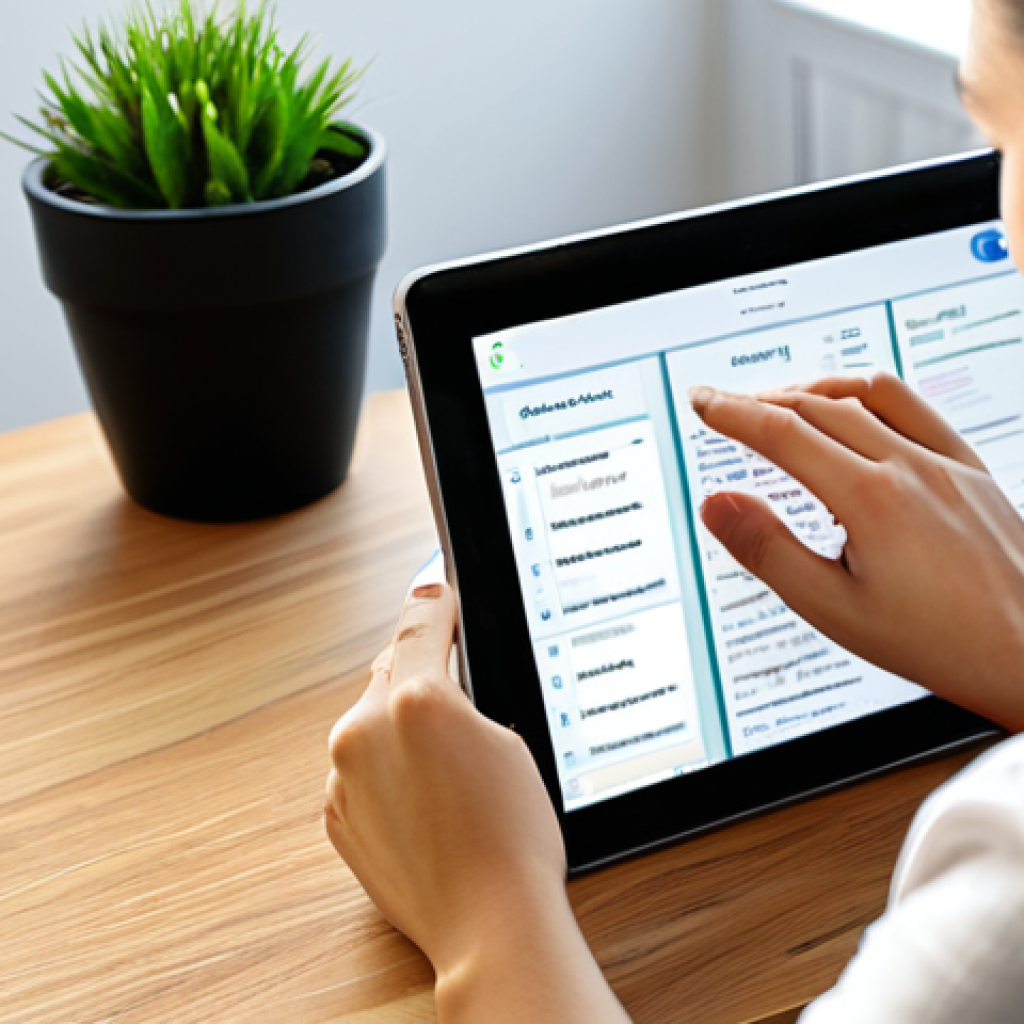There’s an undeniable allure to Italian, isn’t there? I vividly recall my own initial trepidation, imagining endless conjugation tables and monotonous drills – a stark contrast to the lively culture I adored.
Yet, the landscape of language learning has transformed dramatically. The days of needing a Tuscan sabbatical are gone; now, cutting-edge AI language apps, vibrant online communities, and personalized virtual lessons make mastering ‘la bella lingua’ more accessible and engaging than ever before.
Whether you dream of effortlessly ordering an espresso in Rome or understanding every word of a classic Italian film, integrating this beautiful language into your daily life is entirely within reach.
Let’s get into the specifics.
There’s an undeniable allure to Italian, isn’t there? I vividly recall my own initial trepidation, imagining endless conjugation tables and monotonous drills – a stark contrast to the lively culture I adored.
Yet, the landscape of language learning has transformed dramatically. The days of needing a Tuscan sabbatical are gone; now, cutting-edge AI language apps, vibrant online communities, and personalized virtual lessons make mastering ‘la bella lingua’ more accessible and engaging than ever before.
Whether you dream of effortlessly ordering an espresso in Rome or understanding every word of a classic Italian film, integrating this beautiful language into your daily life is entirely within reach.
Let’s get into the specifics.
Embracing Immersive Digital Tools for Rapid Progress

When I first dipped my toes into Italian, I relied heavily on textbooks and CDs – remember those? Oh, how times have changed! Today, the digital world offers an astounding array of tools that can genuinely accelerate your progress, allowing you to immerse yourself from the comfort of your couch. It’s no longer about just memorizing flashcards; it’s about interacting, listening, and speaking in ways that mimic real-life scenarios. My personal breakthrough came when I stopped seeing these apps as mere supplements and started treating them as primary learning environments. They’ve become my constant companion, a portable language tutor that fits right in my pocket.
1. Harnessing the Power of AI Language Apps
Apps like Duolingo, Babbel, and Memrise are fantastic starting points, but to truly level up, you need to dig deeper. I’ve found that apps leveraging adaptive AI, which identify your weak spots and tailor exercises accordingly, are game-changers. For instance, some premium versions offer speech recognition that goes beyond simple pronunciation checks, giving you feedback on intonation and rhythm – crucial for sounding truly Italian. My advice? Don’t just tap through exercises. Take the time to repeat phrases aloud, even if you feel silly. Engage with the grammar explanations, and use their review features religiously. It’s about consistent, active engagement, not just passive consumption. I remember finally nailing the subjunctive tense in a practical context through an app, and it felt like a tiny victory! It’s these small wins that keep you motivated.
2. Leveraging Online Communities and Virtual Classrooms
Beyond individual apps, the internet is brimming with vibrant Italian-speaking communities. This is where the magic of connection happens. I’ve personally benefited immensely from platforms like italki, where you can find native Italian tutors for incredibly affordable rates, often less than a fancy coffee. Having a real human to correct your mistakes and guide your conversation is irreplaceable. Furthermore, joining Facebook groups or Reddit forums dedicated to Italian language learning can provide a supportive network. You can ask questions, share resources, and even find language exchange partners. I recall a time when I was struggling with the difference between ‘sapere’ and ‘conoscere,’ and a quick post in an online forum cleared it up within minutes, offering examples I hadn’t encountered in my textbooks. This peer-to-peer learning environment is invaluable and often overlooked by beginners.
Unlocking Fluency Through Authentic Cultural Immersion
Learning Italian isn’t just about words; it’s about embracing a rich, passionate culture that breathes life into every syllable. My journey truly took off when I stopped treating Italian as an academic subject and started integrating it into my everyday life, making it a source of joy rather than a chore. It’s about more than just understanding the words; it’s about feeling the rhythm, the cadence, and the emotion behind them. This deeper connection makes the learning process feel less like studying and more like an exciting exploration. I discovered that the most effective way to learn is by truly living the language, even if you’re thousands of miles away from Italy.
1. Diving Deep into Italian Media: Films, Music, and Podcasts
This is where learning gets incredibly fun! I initially started with dubbed American movies, but quickly realized the real gold was in Italian films and TV series with Italian subtitles. Start with light comedies or animated films if you’re a beginner, then gradually move to dramas. Directors like Paolo Sorrentino or classics by Fellini are fantastic once you feel more confident. For music, explore artists like Laura Pausini, Eros Ramazzotti, or even modern pop. Listening to the lyrics repeatedly helps with vocabulary and pronunciation. Podcasts are brilliant for casual listening during commutes or workouts; try “Coffee Break Italian” or “News in Slow Italian.” I still remember the thrill of understanding a complex plot twist in an Italian film without needing subtitles – it felt like a superpower! This active engagement with authentic content drastically improves listening comprehension and introduces you to real conversational patterns.
2. Culinary Adventures and Everyday Italian Living
Food, glorious food! Italian cuisine is a global phenomenon, and it’s a perfect entry point for language learning. Try cooking Italian recipes from Italian cookbooks or websites. Following a recipe written in Italian forces you to learn practical vocabulary related to ingredients, measurements, and cooking verbs. When I started baking focaccia using an Italian recipe, I learned terms like ‘lievitare’ (to rise) and ‘impastare’ (to knead) in a hands-on, memorable way. Beyond cooking, try to label items around your house with their Italian names. Make your grocery list in Italian. Even simple actions like asking “Come stai?” to your reflection in the mirror can build confidence. These small, consistent efforts transform your environment into a living language lab. It’s about making Italian a natural part of your daily routine, rather than an isolated study session.
Building a Solid Foundation: Grammar Without the Grind
Grammar often gets a bad rap, doesn’t it? Many learners dread it, imagining endless conjugations and confusing rules. And I get it – I was there too! However, I’ve learned that a solid grasp of grammar isn’t about rote memorization; it’s about understanding the logic and flow of the language. It’s the skeleton that gives structure to your beautiful Italian sentences. Once you see grammar as a tool for clear communication, rather than a hurdle, it becomes far less daunting. My advice is to approach grammar incrementally, focusing on understanding the ‘why’ behind the rules, rather than just the ‘what’.
1. Demystifying Verb Conjugations Through Context
Ah, verbs! The bane of many a language learner’s existence. Italian verbs, with their various tenses and moods, can seem overwhelming. But here’s what changed my perspective: instead of trying to memorize every single conjugation table, I started focusing on common verbs in context. For example, learning ‘andare’ (to go) by associating it with phrases like “Vado al mercato” (I go to the market) or “Andiamo a mangiare” (Let’s go eat). When you see verbs used in natural sentences, their forms start to make sense. I also found that breaking down verb tenses by their usage, rather than just their form, was incredibly helpful. For instance, understanding *when* to use the passato prossimo versus the imperfetto, rather than just memorizing their endings. It’s about building associations and seeing patterns, which truly embeds the knowledge. I recall the satisfaction of naturally using the conditional tense in a conversation after only encountering it in contextual examples, without having consciously ‘studied’ the table.
2. Tackling Tricky Prepositions and Articles with Practical Examples
Prepositions like ‘di,’ ‘a,’ ‘da,’ ‘in,’ ‘con,’ ‘su,’ ‘per,’ ‘tra,’ ‘fra’ can be incredibly confusing because their usage often doesn’t directly translate from English. My breakthrough came from creating my own sentences that exemplified each preposition’s common uses, rather than relying solely on textbook examples. For instance, to differentiate between ‘in’ and ‘a’ for places, I’d constantly practice phrases like “Vado in Italia” (I go to Italy) vs. “Vado a Roma” (I go to Rome). Similarly, definite and indefinite articles (il, la, i, le, un, una) often trip people up due to gender and number agreement. My hack? Always learn new nouns with their article and plural form. Instead of just ‘tavolo’ (table), learn ‘il tavolo, i tavoli.’ This seemingly small habit builds intuitive understanding over time, reducing the need for constant mental gymnastics. It’s about building good habits from the start that make these seemingly complex rules feel second nature.
Beyond the Classroom: Real-World Conversation Strategies
Let’s be honest, the moment of truth for any language learner is when you step out of the textbook and into a real conversation. It’s nerve-wracking, exhilarating, and absolutely essential for true fluency. I used to be terrified of making mistakes, and that fear held me back for far too long. But what I’ve learned is that native speakers are incredibly patient and appreciative of your efforts. The goal isn’t perfection; it’s communication. Embracing the stumble and seeing it as a learning opportunity rather than a failure completely transformed my confidence.
1. Finding Your Language Exchange Partner (and Making the Most of It)
This is, hands down, one of the most effective ways to practice. Platforms like Tandem or HelloTalk connect you with native Italian speakers who are learning your language. It’s a reciprocal relationship, and it’s fantastic because it creates a low-pressure environment. My first language exchange partner, a lovely woman from Naples, taught me so much about colloquialisms and regional accents that no app ever could. Here’s a tip: don’t just chat aimlessly. Set specific goals for each session. Maybe focus on a particular tense, or practice ordering food, or describe your day. Prepare some questions beforehand. And most importantly, don’t be afraid to make mistakes – that’s how you learn! Every awkward pause or misused word is a stepping stone to sounding more natural. Remember, they’re learning too, so there’s a shared understanding and empathy.
2. Mastering the Art of “Filler Words” and Expressive Gestures
If you’ve ever listened to Italians speak, you’ll notice it’s not just about the words; it’s about the entire expression! Mastering common filler words and gestures can make you sound incredibly more natural and give you those crucial few seconds to formulate your thoughts. Phrases like “Allora…” (So…), “Cioè…” (I mean…), “Magari…” (Maybe/If only!), or a simple “Dai!” (Come on!) are peppered throughout conversations. And Italian hand gestures? Oh, they are an art form! Start by observing and mimicking simple ones – the classic ‘pinched fingers’ for “What do you want?” or the hand flick for “Let’s go!” My Italian friends often complimented me on my gestures before my grammar, which was a huge confidence booster. It shows you’re not just speaking words, but truly engaging with the spirit of the language. This isn’t just about vocabulary; it’s about adopting the very rhythm and expressiveness of the culture.
Crafting Your Personalized Italian Learning Journey
One size definitely doesn’t fit all when it comes to language learning. What worked wonders for my friend might not click for you, and that’s perfectly okay. The real secret to long-term success is understanding your own learning style and adapting your approach accordingly. I’ve gone through phases where I loved structured lessons, and others where I just wanted to consume media passively. The key is to stay flexible and listen to what keeps you motivated and engaged. This isn’t a race; it’s a marathon, and burnout is the enemy. Discovering what genuinely excites you about Italian will be your compass.
1. Setting Achievable Goals and Tracking Your Progress
Without clear goals, it’s easy to drift. Instead of a vague “I want to be fluent,” try setting SMART goals: Specific, Measurable, Achievable, Relevant, Time-bound. For example: “By the end of three months, I want to be able to order a meal and ask for directions confidently in Italian during my trip to Rome.” Or, “I will learn 20 new vocabulary words each week and review them daily.” I personally found that using a simple habit tracker app or even just a notebook to mark off my daily study sessions kept me accountable. Seeing my progress visually, even small steps, fueled my motivation. Celebrate the small victories – understanding a song lyric, successfully ordering coffee, or having a short conversation. These moments are crucial for building momentum and preventing discouragement.
2. The Power of Consistency Over Intensity
This is probably the single most important lesson I’ve learned about language acquisition. It’s far better to study for 15-20 minutes every single day than to cram for three hours once a week. Daily exposure, even brief, keeps the language fresh in your mind and reinforces previous learning. Life gets busy, I know! But even just listening to an Italian podcast while you’re making coffee, reviewing flashcards during your commute, or reading a short news article can make a huge difference. Don’t beat yourself up if you miss a day, just pick up where you left off. The cumulative effect of consistent, small efforts far outweighs sporadic bursts of intense study. It’s about building a sustainable habit, making Italian a natural, enjoyable part of your daily routine.
Navigating the Nuances: Mastering Pronunciation and Intonation
When I first started speaking Italian, I felt like I was just saying words. It wasn’t until I truly focused on pronunciation and intonation that I started to *sound* Italian. It’s the musicality of the language, the rise and fall of sentences, and the crisp articulation of individual sounds that makes it so beautiful. Neglecting this aspect can lead to misunderstandings, but more importantly, it robs you of the joy of truly embodying the language. It’s not just about being understood; it’s about sounding authentic and connecting on a deeper level. I promise you, dedicating time to this will make a world of difference to your confidence and the way native speakers perceive your efforts.
1. Articulating Key Sounds: The Double Consonants and ‘R’ Roll
Italian pronunciation is incredibly phonetic, which is a huge advantage, but there are a few sounds that consistently challenge English speakers. The double consonants (like in ‘pizza,’ ‘caffè,’ ‘nonna’) are crucial. They aren’t just longer; they’re pronounced with more emphasis, almost as if you’re holding the sound for a fraction longer. Neglecting them can change the meaning of a word entirely! For example, ‘casa’ (house) versus ‘cassa’ (cash register). And then there’s the rolled ‘R’. This was my Everest! My breakthrough came from practicing with tongue twisters and focusing on the vibration at the front of my mouth, rather than the back of my throat. Don’t be afraid to exaggerate the sounds when practicing alone – you’ll eventually find a natural balance. I spent countless hours repeating words like ‘arrivederci’ and ‘grazie’ until the ‘R’ felt natural, and the effort was entirely worth it for the confidence it gave me.
2. Mimicking Native Speakers: Intonation and Rhythm
Italian isn’t a flat language; it has a beautiful, expressive rhythm and intonation. Listening to native speakers isn’t just about understanding the words; it’s about internalizing the way sentences rise and fall, how questions are posed, and how emotions are conveyed through tone. Watch Italian movies and listen to how actors deliver their lines. Pay attention to how Italians greet each other, how they express surprise or frustration. I often shadow-repeated phrases from podcasts or dialogues, trying to match the speaker’s intonation exactly, even if I didn’t fully understand every word. This exercise trained my ear and my mouth to produce more natural-sounding Italian. It’s like learning a song – you don’t just learn the notes, you learn the melody and the feeling. This is where your spoken Italian truly comes alive and begins to sound less like a textbook and more like genuine conversation.
The Hidden Gems: Less Obvious Resources for Deeper Learning
While the popular apps and textbooks are excellent starting points, some of the most profound learning experiences I’ve had came from exploring less conventional, or perhaps less advertised, resources. These aren’t always in a structured course format, but they offer unique perspectives and authentic insights that can elevate your Italian far beyond basic fluency. It’s about thinking outside the box and finding niche interests that naturally lead you deeper into the language and culture. I’ve found that when you’re genuinely interested in the content, the language learning becomes almost secondary – it’s a vehicle for exploration, not the destination itself.
1. Exploring Italian YouTube Channels and Online Newspapers
Beyond language learning channels, dive into Italian YouTube content that aligns with your hobbies. Are you into cooking? Find Italian cooking channels. Fashion? Look for Italian style vlogs. Travel? Watch Italian travel guides. This makes learning relevant and enjoyable. You pick up specialized vocabulary naturally, and you get exposed to real, unscripted Italian. Similarly, reading online Italian newspapers (like Corriere della Sera or La Repubblica) or magazines (like Internazionale for current events) is an excellent way to expand your vocabulary, understand current affairs from an Italian perspective, and see formal language in action. Don’t worry about understanding every single word; focus on grasping the general idea. I remember picking up specific political vocabulary after following Italian election news, which felt incredibly empowering and relevant.
2. Unveiling Regional Dialects and Cultural Nuances
While standard Italian (derived from the Florentine dialect) is what you’ll learn in most courses, Italy is incredibly rich in regional dialects. Understanding the existence of these, and perhaps even learning a few common phrases from a specific region you’re interested in (like Romanesco, Neapolitan, or Sicilian), can deepen your appreciation for the language and its people. This isn’t about becoming fluent in a dialect, but rather recognizing its influence and understanding that Italian is a living, breathing entity with diverse expressions. Exploring the history behind certain words or phrases, or understanding unique cultural customs, also enhances your learning. For example, knowing the difference between a “trattoria” and a “ristorante” isn’t just vocabulary; it’s a cultural insight. These nuances add layers of richness to your Italian journey and allow for more profound connections with native speakers.
| Learning Strategy | Key Benefit | My Personal Takeaway |
|---|---|---|
| Digital Immersion (Apps, Online Communities) | Accessibility, personalized practice, real-time feedback. | Don’t just passively click; actively engage and use speech recognition tools. Online forums provide invaluable, immediate answers. |
| Cultural Immersion (Media, Cooking) | Authentic exposure, contextual learning, motivation through enjoyment. | Start with content you genuinely enjoy, even if it’s challenging. Cooking Italian recipes from Italian sources makes vocab stick. |
| Grammar Focus (Contextual) | Structural understanding, clear communication, reduced rote memorization. | Learn verbs and articles in full phrases, not isolation. Focus on the ‘why’ of grammar rules. |
| Conversation Practice (Language Exchange) | Fluency development, confidence building, natural expression. | Find a consistent partner, set mini-goals for each session, and embrace mistakes as learning opportunities. |
| Pronunciation & Intonation | Authenticity, improved listening, deeper connection. | Exaggerate difficult sounds in private practice. Mimic native speakers’ intonation like it’s a song. |
| Personalized Approach (Goals, Consistency) | Sustainable progress, tailored learning, long-term motivation. | Set SMART goals and prioritize consistent, daily mini-sessions over infrequent cramming. |
Wrapping Up
Learning Italian, as I’ve experienced firsthand, is far more than just acquiring a new skill; it’s an exhilarating journey into a vibrant culture, a passionate way of life, and a deeper understanding of human connection. It’s about finding joy in every new word, every correctly conjugated verb, and every authentic conversation. Remember, fluency isn’t a destination; it’s a continuous, rewarding adventure. Embrace every step, every stumble, and every small victory along the way. Your Italian story is waiting to be written.
Handy Resources & Tips
1. Immerse Yourself Daily: Even 10-15 minutes of daily engagement (listening, reading, speaking) is more effective than long, sporadic sessions.
2. Find Your “Why”: Connect your Italian learning to something you genuinely love – be it Italian cinema, cooking, travel, or history. This passion will fuel your motivation.
3. Don’t Fear Mistakes: Native speakers appreciate your effort. Every mistake is a learning opportunity, not a failure. Embrace the journey of sounding more natural.
4. Leverage Technology (Wisely): Use AI apps for structured practice, but balance it with real human interaction through language exchange partners or online tutors.
5. Explore Beyond Textbooks: Dive into authentic Italian media, follow Italian social media accounts, and try to think in Italian throughout your day. This brings the language to life.
Key Takeaways
The journey to mastering Italian is a blend of digital immersion, cultural exploration, foundational grammar understanding, and real-world conversation.
Consistent, personalized practice, coupled with an eagerness to embrace the language’s unique rhythm and culture, will unlock genuine fluency and a deeper appreciation for ‘la bella lingua’.
Frequently Asked Questions (FAQ) 📖
Q: I’m genuinely drawn to Italian, but honestly, the thought of all those daunting conjugation tables and grammar drills makes me feel a bit… overwhelmed. Has language learning really changed enough that it’s less about rote memorization and more approachable now?
A: Oh, I completely get that feeling! I remember my stomach doing a little flip thinking about declensions and endless vocabulary lists, imagining those old-school, stuffy classrooms.
But honestly, the landscape of learning Italian (and pretty much any language!) has truly undergone a revolution. It’s not about endless, monotonous drills anymore.
The biggest game-changer, for me, has been how interactive and personalized it’s become. We’ve got these brilliant AI-powered apps that genuinely make learning feel like a game, subtly reinforcing patterns without you even realizing you’re “studying.” Then there’s the explosion of online communities – think Discord servers dedicated to Italian learners, or Facebook groups where native speakers just love to help out.
It’s less about force-feeding information and more about dipping your toes into the language in a way that feels natural and, dare I say, actually enjoyable.
You’re constantly interacting, seeing progress, and it really shifts the mindset from “I have to memorize this” to “I get to try this out!”
Q: Okay, so the dream of a Tuscan sabbatical isn’t strictly necessary anymore – that’s a huge relief! With all these fantastic new tools and approaches, where should someone like me, a complete beginner, even start? What’s actually effective for getting a solid foundation?
A: That’s the million-dollar question, isn’t it? It can feel a bit like standing in front of a massive buffet when you’re just trying to pick a starter! From my own journey, the most effective path involves a multi-pronged approach, especially for a beginner.
First, grab one of the popular, gamified apps – I’ve personally had great success with Duolingo for daily consistency, just 10-15 minutes a day to get those basic patterns ingrained.
It builds a fantastic habit. But here’s the kicker: don’t just stop there. As soon as you feel comfortable with the absolute basics, dive into real human interaction.
Platforms like iTalki or Preply are incredible because you can find native Italian tutors for really reasonable rates, sometimes as low as what you’d spend on a coffee and a pastry!
Having someone correct your pronunciation and genuinely converse, even haltingly at first, is invaluable. I remember my first few sessions were utterly terrifying, but the sheer joy of forming a simple sentence and being understood was electric.
Combine those two, and you’re building both a foundational understanding and the confidence to actually use the language.
Q: I’d really love to genuinely use Italian, whether it’s for travel or finally understanding a classic Italian film without constantly glancing at subtitles. How long does it typically take to get to a comfortable, conversational level, or at least feel confident enough for those daily interactions like ordering food?
A: That’s such a relatable goal, and honestly, it’s entirely within reach! The timeline really depends on consistency, but I’ve found that consistent, even short, bursts of effort add up incredibly fast.
For those practical, everyday interactions – like confidently ordering an espresso, asking for directions, or chatting briefly with a shopkeeper – you can absolutely start feeling comfortable within 3 to 6 months of dedicated practice.
I’m talking 20-30 minutes most days, perhaps a longer session with a tutor once a week. I vividly remember my first trip to Rome after a few months of diligent study; ordering a cappuccino and a cornetto in Italian, understanding the barista’s quick reply – it felt like a tiny Everest conquered!
For “conversational fluency” – being able to hold a more sustained, natural conversation – you’re probably looking at 6 to 12 months, or even longer, depending on how much immersion you build into your routine.
The key isn’t perfection; it’s consistency and celebrating every small victory. Every time you understand a new word in a song or piece together a sentence, you’re building that confidence.
It’s a journey, not a race, and every step, no matter how small, is progress.
📚 References
Wikipedia Encyclopedia
구글 검색 결과
구글 검색 결과
구글 검색 결과
구글 검색 결과
구글 검색 결과




